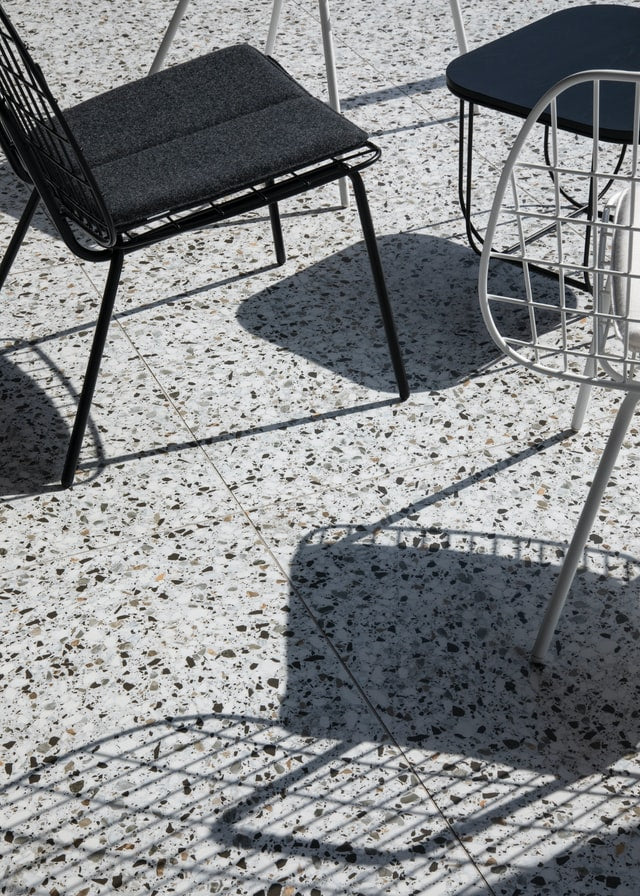Terrazzo dates back over five hundred years. Terrazzo, which means terrace in Italian, was invented in Venice as terrazzo floors during the 15th century. Workers merged the small marble rocks in clay with leftover marble chips and ground them flat into a smooth walking surface. Galeras is being made as a tool to allow the workers to grind the terrazzo surface flat.

Changes in manufacturing to popularise terrazzo
Workers later found the use of goat milk as a finish to demonstrate the amazing details of terrazzo. Galeras was then reformed to create the modern Galera by mechanising it. The addition of colours through different marble chips and stones allowed limitless varieties of terrazzo’s application. Portland cement has later introduced to the industry shortly after the improved Galera. Brass divider strips were also introduced alongside modern Galera and helped prevent cracks from forming in a terrazzo floor. Intricate patterns and designs in terrazzo are combined with divider strips to separate different areas of colour by using the design capability of terrazzo with the divider strips to create a unique art design.
Terrazzo was brought into the United States from Europe in the late 1700s. Monumental structures started to imply terrazzo into their blueprints. The further improvement on terrazzo with epoxies, polyesters, latex, and acrylics improved terrazzo significantly in the past 40 years by providing a smooth, uniformly textured surface for floors, walls, stairs, curbs, counter-tops and even ceilings.Terrazzo tiles have been installed in demanding environments in Australia such as airports, railway stations and shopping centres due to their easy installation benefits and trouble-free maintenance. With the increased availability of Terrazzo, anyone can own it, and it is being viewed as an excellent style for architects.

The art of terrazzo
Terrazzo’s timeless beauty and elegance are built on the installation process, a form of art. Terrazzo tiles are being formed into artworks by skilled workers and craftsmen that sees through the material used and the right application on the placement of Terrazzo tiles.
Terrazzo has multiple installation processes that depend on the surface of the intended application. The processes include the “in situ” method that works for the premium Terrazzo flooring in the market, where Terrazzo is poured on-site for a seamless finish on the flooring.
Terrazzo design is like chalk drawing, but the difference is the pattern is being kept for 40-400 years. Room for customizations is available as the patterns and particles lay below the surface and not on it.
Terrazzo style tiles emerged around the same time as the creation of cement at the end of the 19th century, where designers could combine a wide variety of marbles and stone chips in a mixture of coloured cement. Different designs could be pressed into moulds to create preset patterns in a singular tile to copy Venetian villa designs in mosaic flooring and dominant art movements.
The combination of colour and elements could be mixed and merged by the artistic potential of terrazzo tiles by utilising the vast number of colours leaving breathtaking artworks on the intended surface. Epoxy-based terrazzo is suitable for indoor applications such as b floors, floor tiles and kitchen surfaces/floors.
The Terrazzo look tiles available for designers serve as an alternative for traditional terrazzo, which is costly and time-intensive to install, from kitchen splashback tiles to wall mounted terrazzo tiles, and Terrazzo featured furniture. Instead, terrazzo gives floors that contain a small amount of pearl for a controlled sparkle that suits the surrounding neutral-coloured stone featured tiles.
With the technology today, the production of tiles is more accessible and cheaper. As a result, terrazzo steadily climbs its way to being the premium product today.

